Cashew Land – Where Did Crooked Tree Get its Name?
This week, we shine a spotlight on Crooked Tree Village, one of Belize’s most enchanting and historically rich communities, for our Belize on Reel segment. Famous for its bountiful cashew fruit, vibrant wildlife sanctuary, and enduring traditions, Crooked Tree boasts a heritage that predates colonial records. News Five’s Marion Ali delves into two intriguing theories about the origin of Crooked Tree’s name and uncovers the deep history of human settlement in this remarkable village.
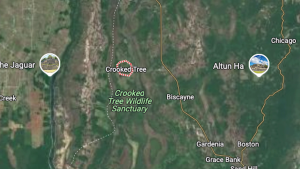 Marion Ali, Reporting
Marion Ali, Reporting
Crooked Tree Village may seem quiet and idyllic, but its history is as winding and intriguing as its most famous landmark. Legend has it that the village got its name from a uniquely twisted tree hidden in an inaccessible area. Another theory suggests it was named after three crooks who settled there in the 1700s.
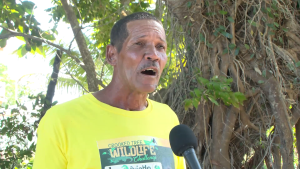
George Tillett
George Tillett, Chairman, Crooked Tree Village
“In the late 1700s a bunch of European logwood cutters, along with their African slaves were journeying down the Belize River in search of logwood, which was then the only source of income for the country. They diverted into this area known as Black Creek and from this inland island with its abundance of logwood and they started trading logwood but they needed to get a name from where these logwood were coming from. So, one of the settlers noted an extraordinarily twisted bullet wood tree that they had their encampment under. And it was from then and that early it got the curious name of Crooked Tree.”
Marion Ali
“You sure it’s that it’s not crooked three men?”
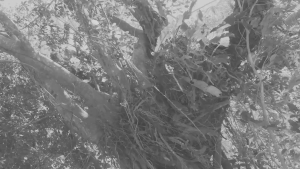 George Tillett
George Tillett
“There is this crazy theory that some people brought upon us because it was settled by three slave owners, the Tilletts, the Gilletts, and the Crawfords. And they were referred to as a crooked three, but I’m quite sure that’s not what village got its name from. It’s from a tree; it’s from a twist bullet wood tree.”
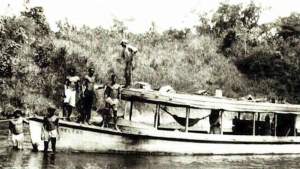 While the origin of Crooked Tree’s name remains a mystery, its history is undeniably ancient. Village Chairman George Tillett reveals that evidence points to human occupancy dating back thousands of years, long before European settlers arrived. These early inhabitants, known as the Paleoindians, left a legacy that continues to shape the village’s rich cultural heritage.
While the origin of Crooked Tree’s name remains a mystery, its history is undeniably ancient. Village Chairman George Tillett reveals that evidence points to human occupancy dating back thousands of years, long before European settlers arrived. These early inhabitants, known as the Paleoindians, left a legacy that continues to shape the village’s rich cultural heritage.
George Tillett
“We have evidence washed up on our shores with their volcanic rock spearheads that archeologists dated way back to the Chalillo Indians when they used hunt mammoths and stuff like that. That was before the Mayan time. Then after that, we find other products that suggested that the Mayas also lived here. As a matter of fact, on the western side of the island of Crooked Tree is an excavated Maya temple known as Chau Hiix and there are a lot of Mayan artifacts people find when they’re digging up to build houses and foundation – things that relate to Mayan products.”
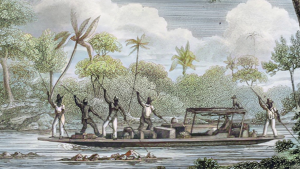 By the mid-1900s, Crooked Tree was well known for its unique charm but getting in and out wasn’t always easy. Before the causeway was built, villagers relied on boats, and a trip to Belize City could take an entire day. This transformation from isolation to connectivity marks a significant chapter in the village’s history, highlighting the resilience and resourcefulness of its people.
By the mid-1900s, Crooked Tree was well known for its unique charm but getting in and out wasn’t always easy. Before the causeway was built, villagers relied on boats, and a trip to Belize City could take an entire day. This transformation from isolation to connectivity marks a significant chapter in the village’s history, highlighting the resilience and resourcefulness of its people.
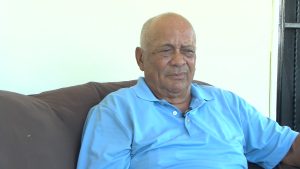
John Gillett
John Gillett, Elder, Crooked Tree Village
“One of the boats used to name Express. One used to name Veronica, and both of them had the barges and so on that they would tow. And the barges would mostly take the crops and the livestock while the boat and a portion of the barge would be used to take passengers also. Those days, the boat would take about eight hours from here to Belize, and it took eight hours mainly because of the current from Black Creek that carries it.”
John Gillett recalls a time before boats were available in Crooked Tree, when villagers had to paddle their way to Belize City. Selling cattle meant tying them to a horse and embarking on a two-day trek. Gillett’s life is a testament to the resilience and resourcefulness of the villagers, offering unique experiences from an era that now exists only in memory. His stories paint a vivid picture of a bygone time, highlighting the enduring spirit of Crooked Tree’s community.
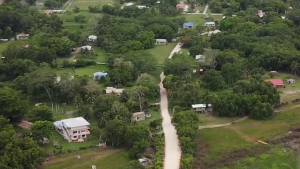 John Gillett
John Gillett
“We had to live off the land and when I say live off the land in both crops as well as livestock, and we had to eat what we produce, ranging from cows to rice to corn, plantain, cassava, all those sort of things there. And of course, getting our meats from the pigs, the cow. We couldn’t go to the shop and just buy rice like that. We had to put it in the mortar and we beat that before we go to school in the morning. We had to cut the firewood, we had to melt the cows. All these things that we had to do. It’s a childhood that I wouldn’t want to change any at all in my lifetime.”
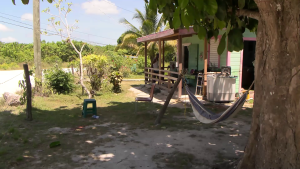 Crooked Tree Village is more than just a name on the map. From the ancient Paleoindians to the Mayas and colonial settlers, its history is woven with tales of twisted trees and cherished experiences. This vibrant community is a living story, brimming with resources and narratives still being shared by those who know it best.
Crooked Tree Village is more than just a name on the map. From the ancient Paleoindians to the Mayas and colonial settlers, its history is woven with tales of twisted trees and cherished experiences. This vibrant community is a living story, brimming with resources and narratives still being shared by those who know it best.
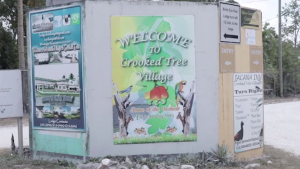 George Tillett
George Tillett
“Crooked Tree is really a blessed village, blessed with resources. I think when Samuel Haynes was writing the National Anthem and said “Nature has blessed us with wealth untold”, he was referring to Crooked Tree.”
If you haven’t visited Crooked Tree yet, it’s time to plan a trip. This charming village offers more than just the famous cashew fest and abundant wildlife. Every path is steeped in history, and you might even find a story in the bend of a tree. Come explore Crooked Tree, where the past and present intertwine in a beautiful tapestry of culture
and nature. Marion Ali for News Five.







Facebook Comments